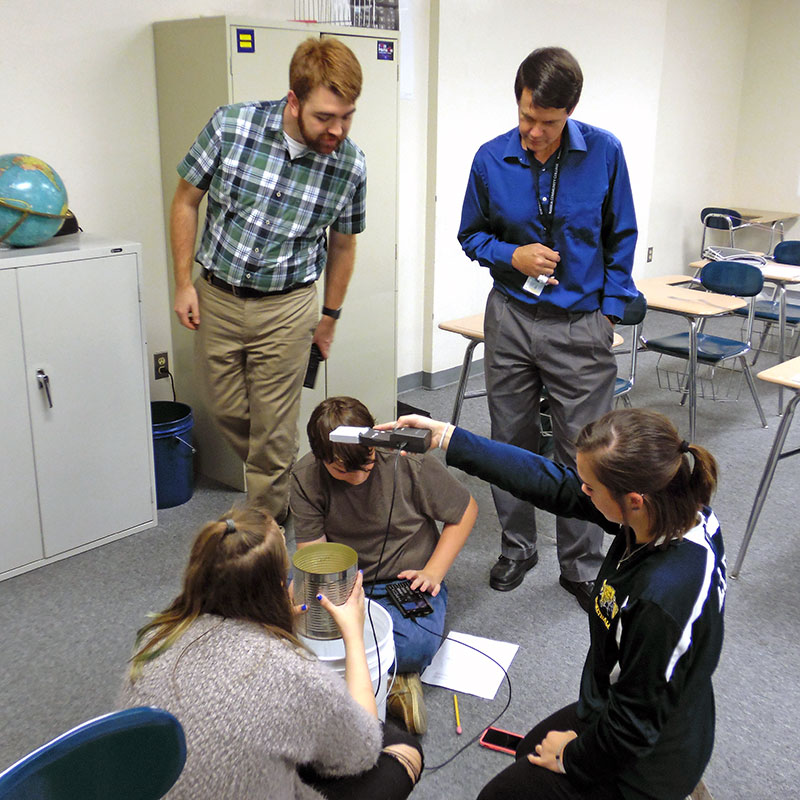Students in an Algebra I Part 1 class set up an apparatus that allows them to measure the flow rate of water leaking from an aluminum can over time.
Once the students are satisfied with their set-up, they pull the plugs from the bottom of the water filled cans and use the TI-nspires and connected sonar distance sensors to collect data in real time. After they have collected the raw data points, they use the data to construct linear models, using the mathematical skills they have been learning in class, to describe the change in height of the water over time.
These measurements can then be used to apply to real life scenarios, such as leaking oil tankers, leaking life boats, or dribbling water fountains. Students are asked both conceptual and hypothetical questions about their data, that are then connected to the mathematics being taught, in order to help solidify both the abstract and realistic elements of algebra.
